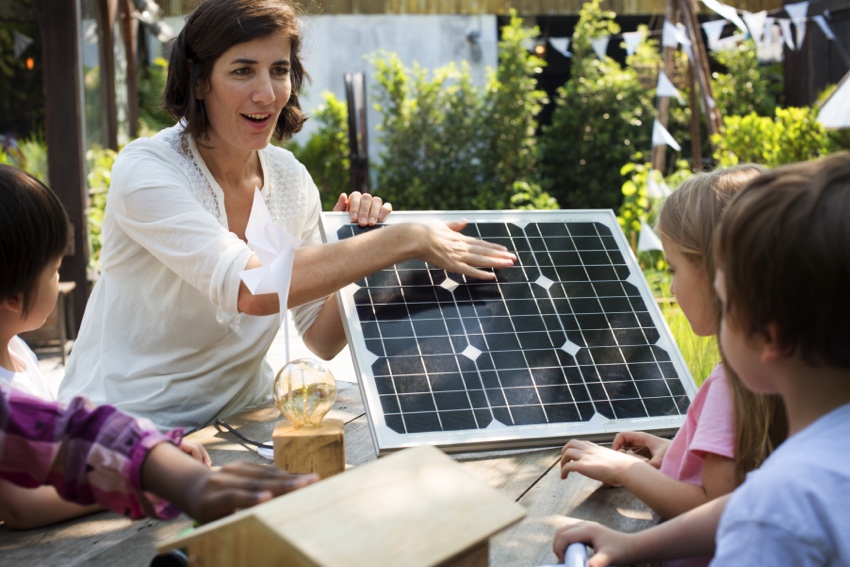Community Helpers: Thinking Beyond the Badge


Have you ever felt really good about something you were planning for your class to engage in only to think, in hindsight, “Boy, was I wrong in how I approached that?” I imagine it’s the kind of thing that many of us have experienced—I certainly have.
Back when I was student teaching, I planned what I thought was an amazing lesson on community helpers for the kindergarten students I was working with. I created a large chart with all the important community helpers: police officers, firefighters, postal workers, and doctors. We were going to spend a day on each helper—learning what they wear, how they help us, and what tools they use. I thought it was a fantastic idea and was putting my lovely chart together when my then roommate, a teacher in training herself, started laughing.
Expand, Don’t Limit, Children’s Understanding of the World
It turns out that when my roommate was in kindergarten, she came home from her school’s Community Helper Week and informed her dad, the owner of a small landscaping company, that he couldn’t possibly be a community helper because community helpers were really important and needed to wear badges or special hats to really help people.
Her amused father saw an opportunity to expand her well-intentioned but clearly limited understanding of what a community helper was. He took her for a walk and pointed out the trash can at the end of the driveway as he asked, “What about the men that work on the garbage truck? Are they community helpers?” She had to think for a minute but quickly realized that, yes, the men who collected the trash and recycling were, in fact, very helpful to the community. They kept walking with her father pointing out several other helpers along the way. “Remember when our basement flooded and Mr. Jacobs over there came to our house with all of his plumbing equipment and fixed the leak?” “Look over there, the cones are still set up from where the highway maintenance team put in a new speed bump to slow people down as they drive through our neighborhood.” “And how about your favorite babysitter, Lisa? She helps a lot of families by walking their dogs when they have long days at work.”
My roommate then recalled her “a-ha” moment which came when they reached the park: “Wait, Daddy, we’re community helpers! Remember when all the kids and moms and dads came and cleaned up the park? And you brought your truck and lots of mulch and we raked it all over the park. We were community helpers that day!”
Needless to say, in talking with my roommate, I realized what a limited representation of community helpers I was about to impart to my class. I immediately rethought my approach to helping children understand the impact of community helpers.
Project-Based Investigations
As I became a more experienced teacher, one of the things I really loved about using project-based investigations in my classroom was the many opportunities we had to focus on all kinds of different community helpers throughout the course of the year.
I discovered that there was no need to cram all the community helpers into one week or to limit our community helpers to certain types of professions. Each study topic lends itself to the introduction of new kinds of community helpers, the tools they use, and how they complete their jobs. For example, when studying trees, we learn about the people who take care of the trees in our school courtyard and we invite a carpenter to visit to show us how he works with wood from trees to build bookshelves for our classroom. During a study on exercise, we visit a local gym to see how the instructors there teach the community about movement and nutrition. And then Lilly’s mom, who is a pediatrician, joins our large group and shares X-rays to help children understand how the bones in our bodies help us move. Studies offer a wonderful way to help children expand their definition of “community helper” and think outside the box to see that community helpers are indeed all around us.
There are many opportunities to layer in materials that encourage conversations around community helpers throughout your classroom environment.
Consider rotating photographs of different jobs in the Dramatic Play area, incorporating tools used by different professions in the Discovery area for children to explore, and adding books to the Library area that depict a wide variety of different roles. It’s important as you make choices for your classroom that you take a moment to ensure the pictures and photographs you include do not depict stereotypes. The images should respect diverse roles and experiences. For instance, a matching game of community helpers should include female as well as male firefighters, construction workers, teachers, and doctors.
Involve the Families
Another wonderful place to look for inspiration is the wide variety of jobs that the family members in your classroom community hold. Inviting family members to share their jobs and the tools that they use offers a perfect opportunity for families to engage with the children in the classroom and broadens children’s definitions of community helpers even further. I always loved being able to give children the chance to see their family members as people who are, in some way, making a difference in their communities through their work.